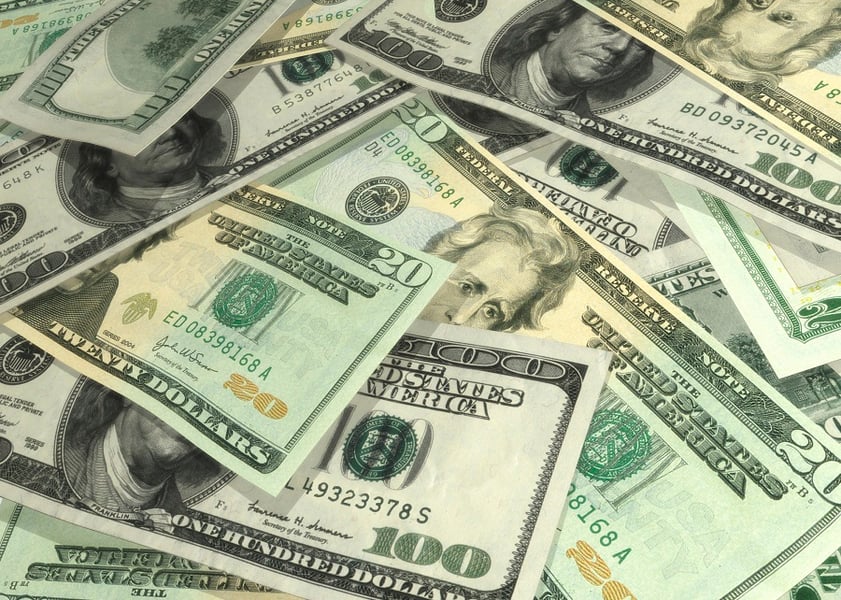More than 80% of companies in the Standard & Poor's 500 have reported first-quarter earnings, and they're poised to set a record for the amount of cash on their balance sheets: $1.33 trillion.
The ETF industry has rolled out funds that take advantage of two ways that companies are spending their cash, and now there's a third type that invests in companies that reinvest that money wisely.
Thanks to the
Federal Reserve, all that cash in corporate coffers is earning almost nothing. The average money market fund returns 0.10%, according to iMoneyNet. Aside from watching the value of their cash evaporate from inflation, companies can:
• Pay it out in the form of dividends to investors
• Buy back their own shares
• Reinvest in the long-term growth of their business
They have been doing all three with gusto. With about 80% of first-quarter S&P 500 earnings data in for the first quarter of 2016, dividend payouts could be within the top three quarters in history, said Howard Silverblatt, senior index analyst for S&P Dow Jones Indices. (In dollar terms, Apple is the biggest dividend payer).
Similarly, buybacks continued at a robust pace in the first quarter. About 30% of S&P 500 companies have reduced their year-over-year diluted share count by at least 4%, although Mr. Silverblatt expects that number to fall to about 25% by the time all companies have reported. All other things being equal, a 4% reduction in shares translates to a 4% tail wind for the stock.
Companies that pay dividends — particularly those that increase dividends regularly — have been in favor since the Great Recession, as investors have looked for yield wherever they could find it. ETFdb.com counts 137
dividend ETFs, with the largest being Vanguard Dividend Appreciation ETF (VIG), weighing in at $20.9 billion.
Buyback ETFs, while more unusual, have been growing in popularity. PowerShares BuyBack Achievers Portfolio ETF (PKW) currently has assets of $1.6 billion. SPDR S&P 500 Buyback ETF (PDF), which rolled out in February 2015, has $9.2 million in assets.
The main purpose of excess cash, however, is to grow and expand the business. The past 12 months have seen capital expenditures fall 4%, most of which is because of the meltdown in the oil patch. Capital expenditures have fallen 40% in that snakebit sector. Excluding the oil sector, however, capital expenditures have soared 11%, Mr. Silverblatt said. (He also notes that capital expenditures nearly always fall in the first quarter.)
Currently, Elkhorn S&P 500 Capital Expenditures Portfolio (CAPX) is the only ETF that bases its investments on how a company makes its capital expenditures. The fund follows the S&P Capex Efficiency Index, which, in turn, follows the 100 members of the S&P 500 that have followed the strongest capital discipline. According to S&P, “efficiency of capital expenditures is measured through capital expenditures that have resulted in increased sales.”
iShares has also registered for a Capex ETF, but it has yet to hit the market.
How do the three types of funds stack up? So far this year, dividends are still on top, but capital expenditures are reasonably close behind. Buyback funds are trailing. Returns so far include:
• Vanguard Dividend Appreciation, up 4.67
• Elkhorn S&P 500 Capital Expenditures Portfolio, up 3.43%
• PowerShares BuyBack Achievers, down 0.33%
So far this year, and not counting Tuesday's rout, the S&P 500 is up 1.96% with dividends reinvested. For most investors, simply investing in an S&P 500 index fund is fine. But for those interested in companies that are actually spending money on growing the business, a capex ETF fund might be a good bet.







